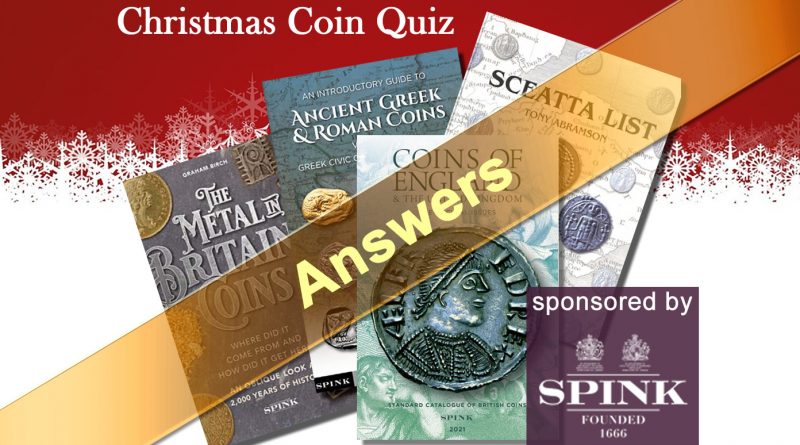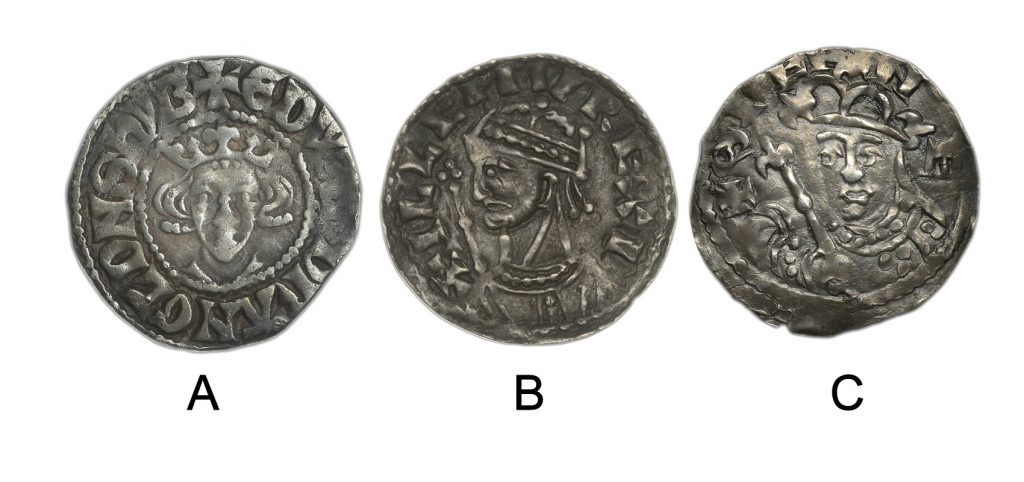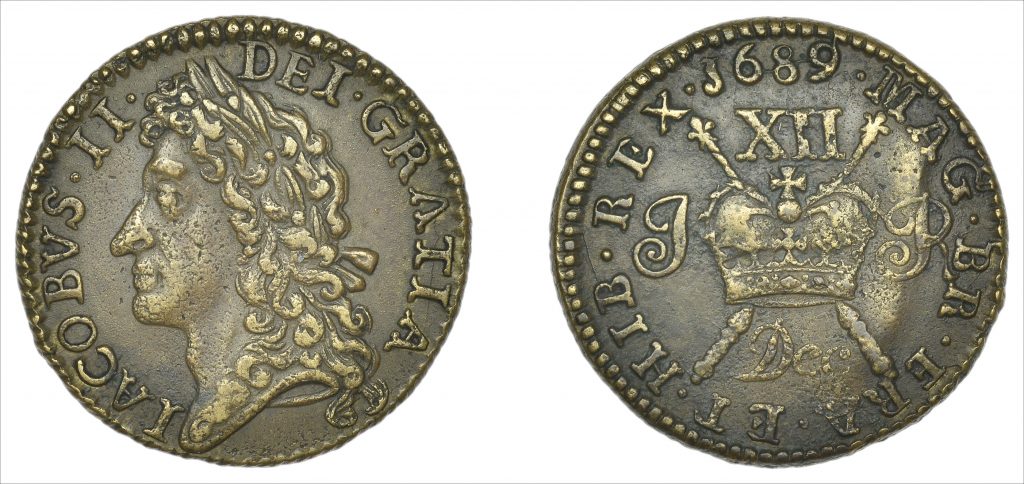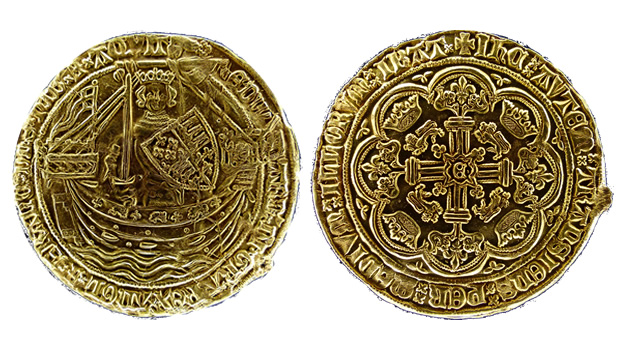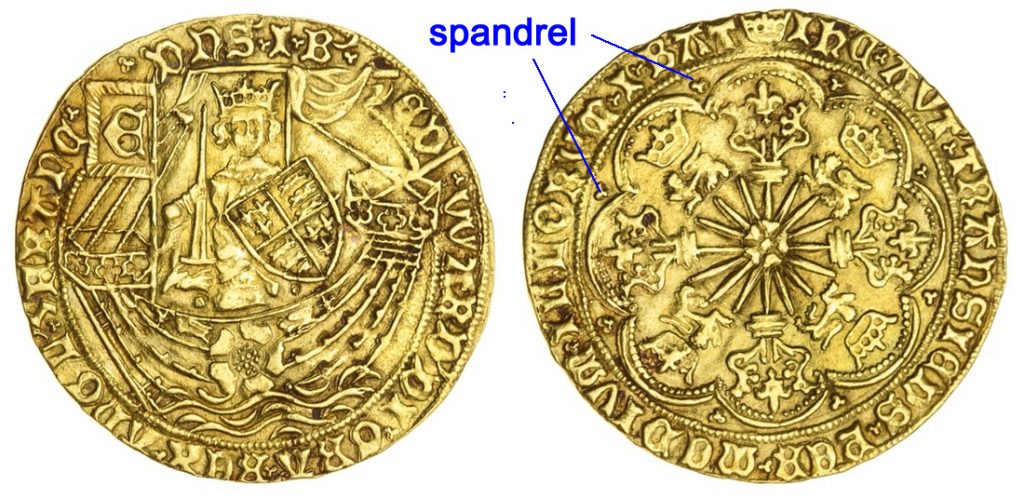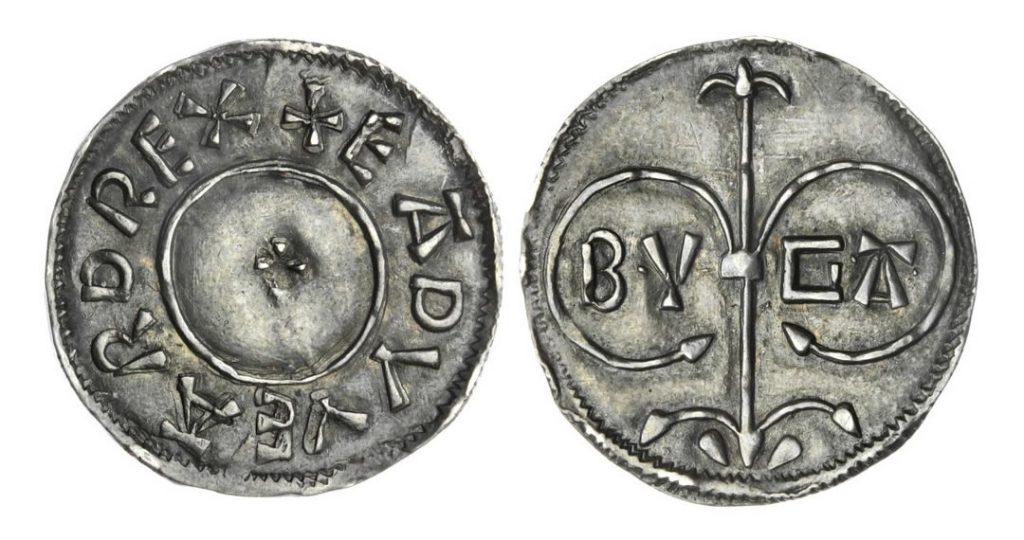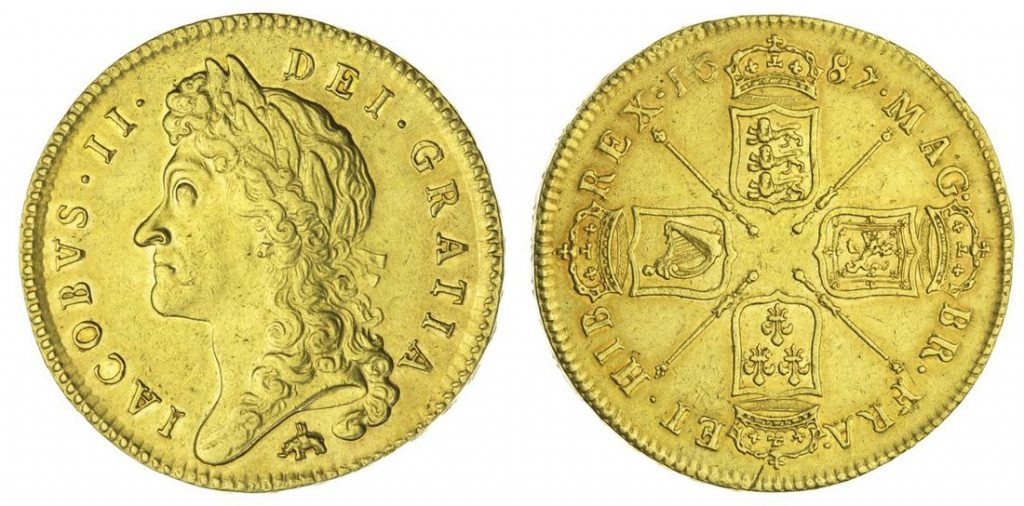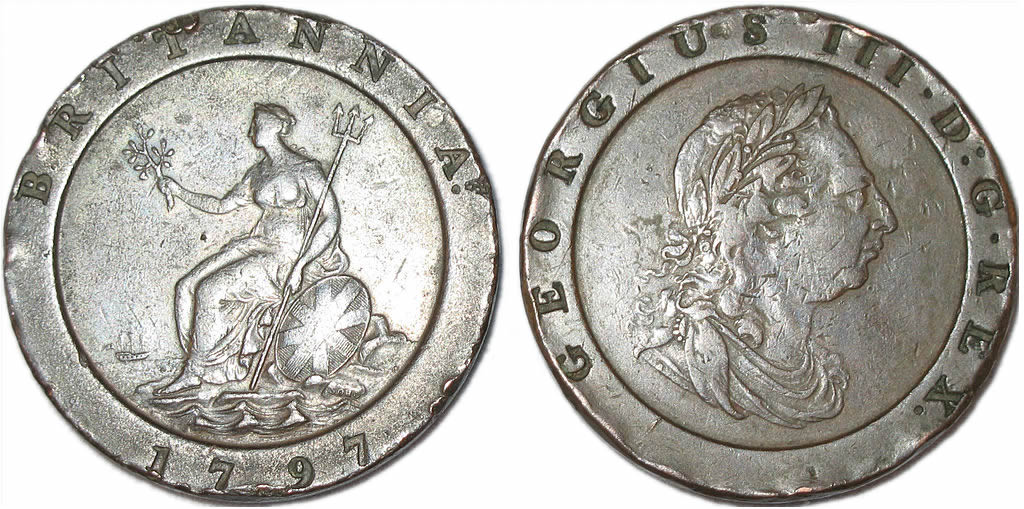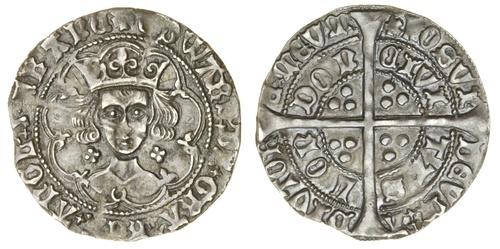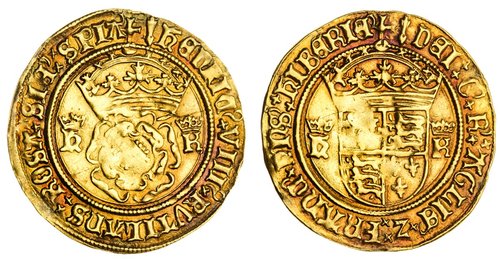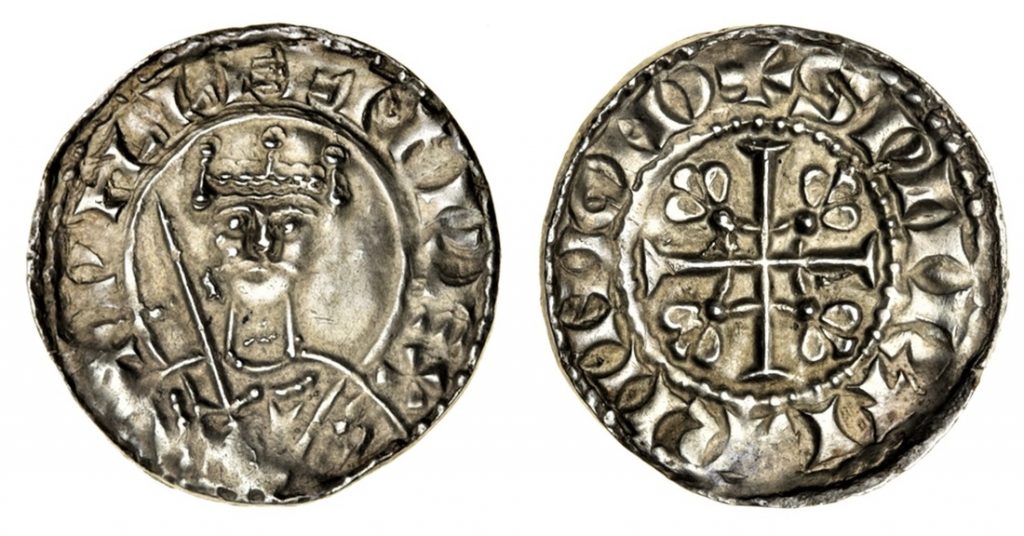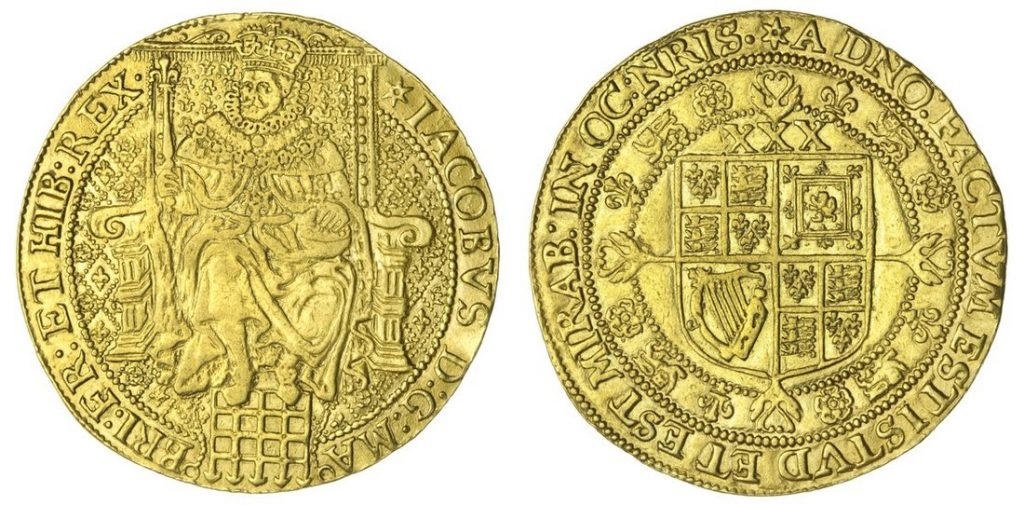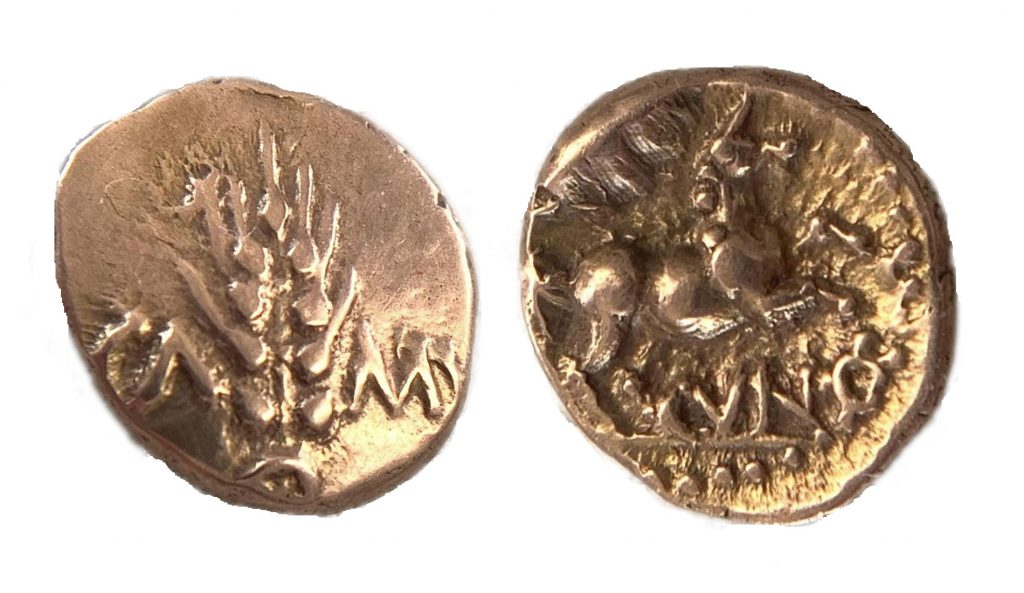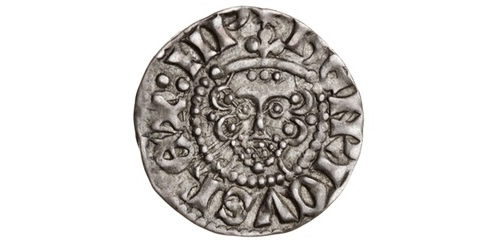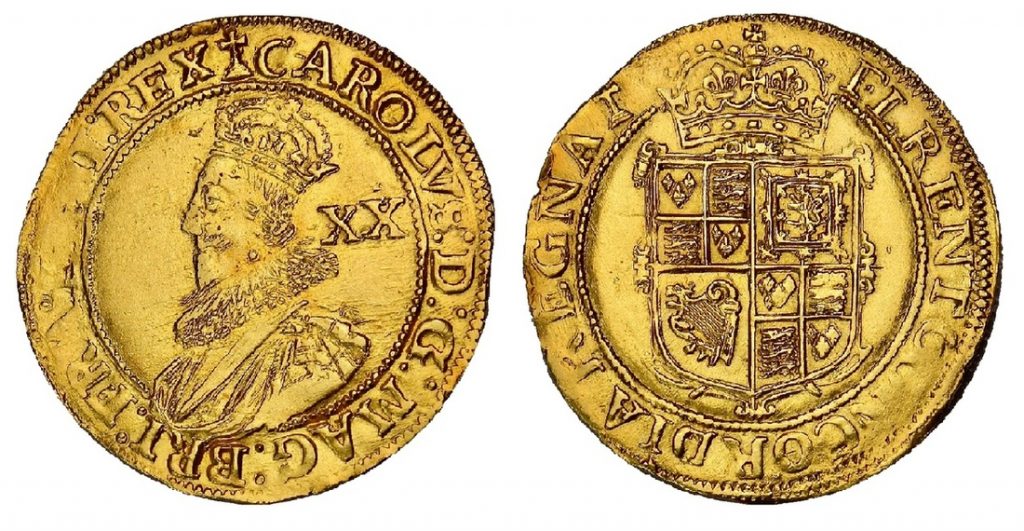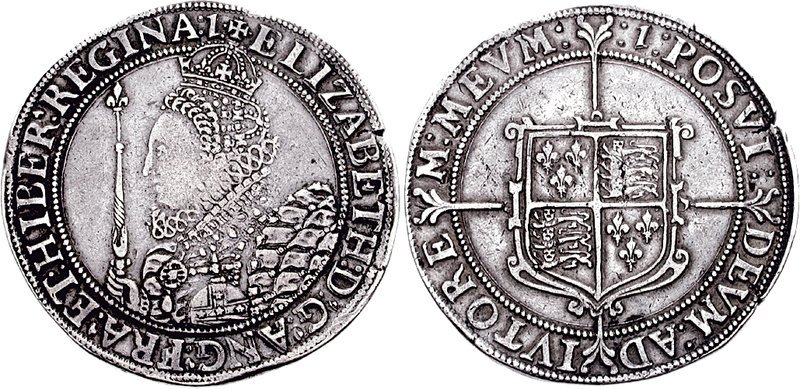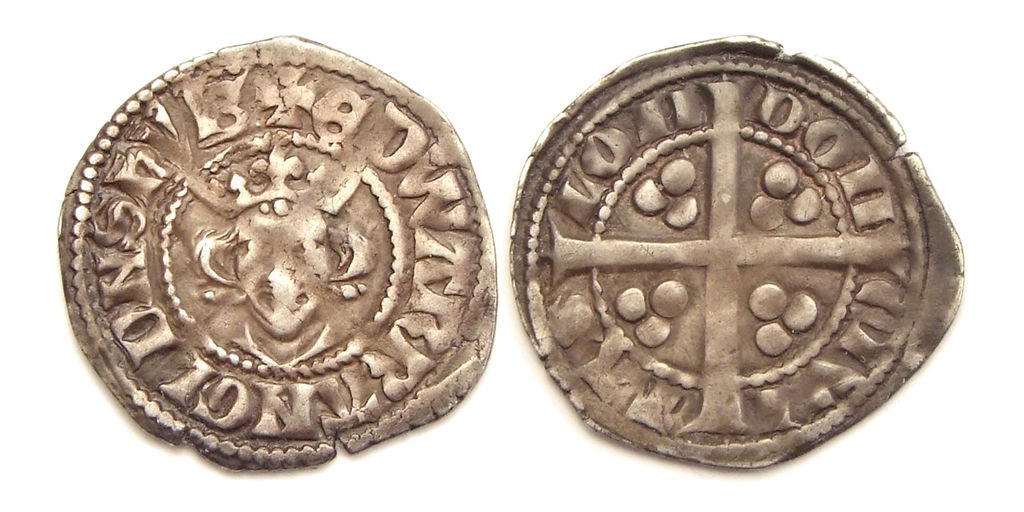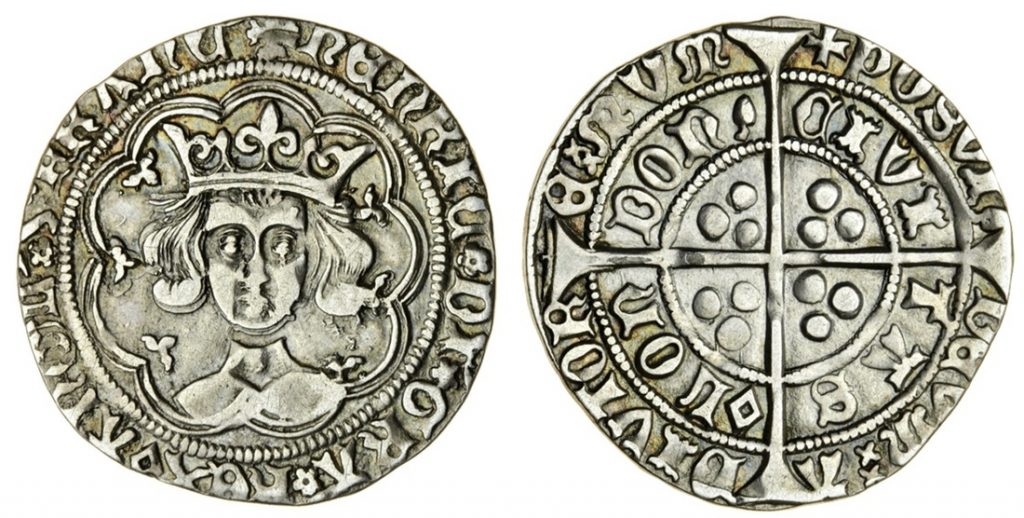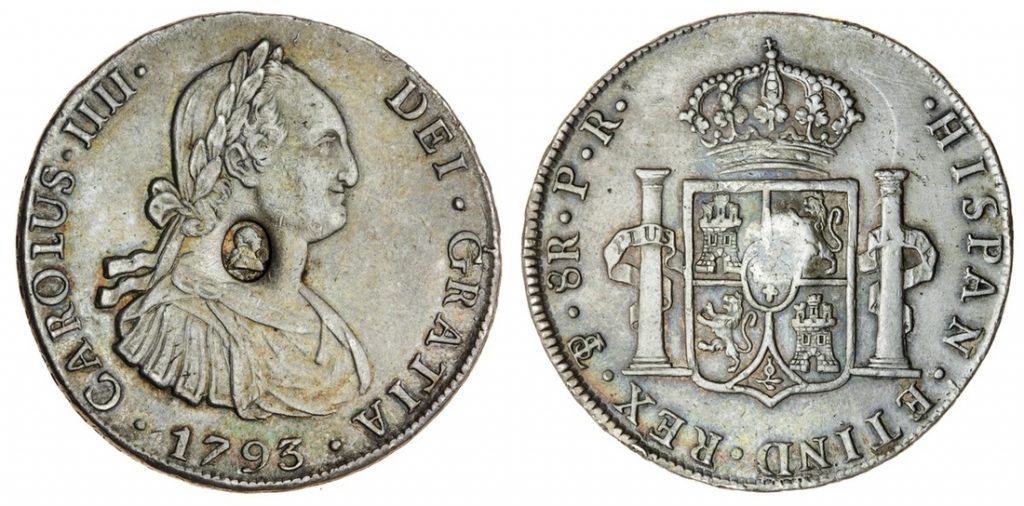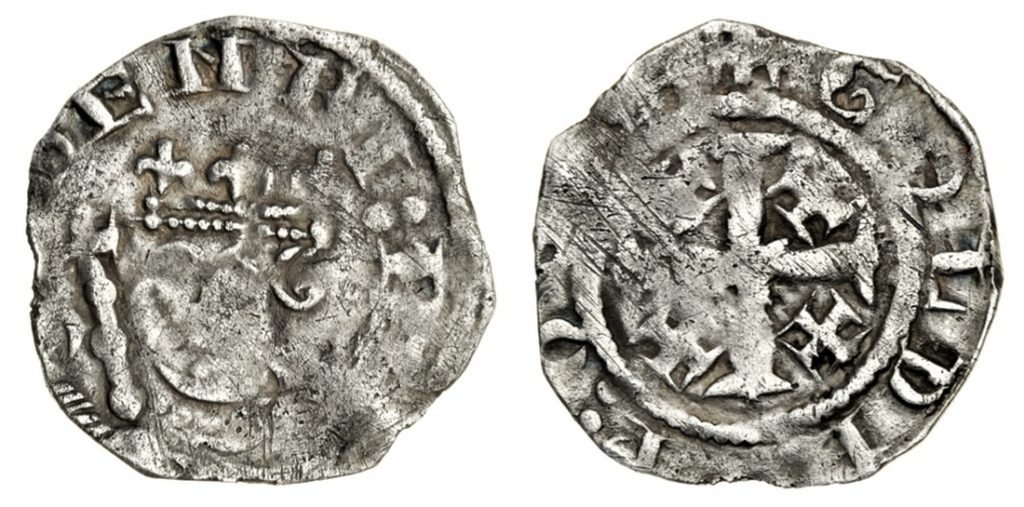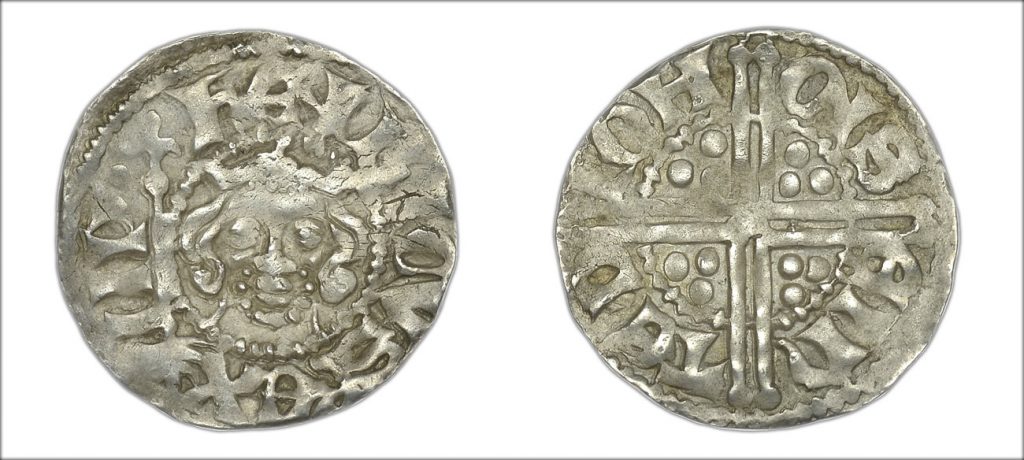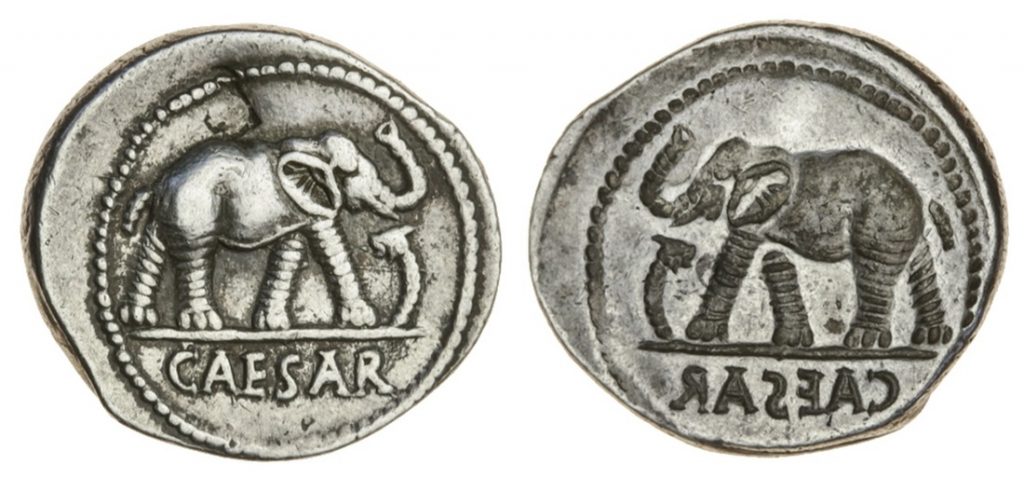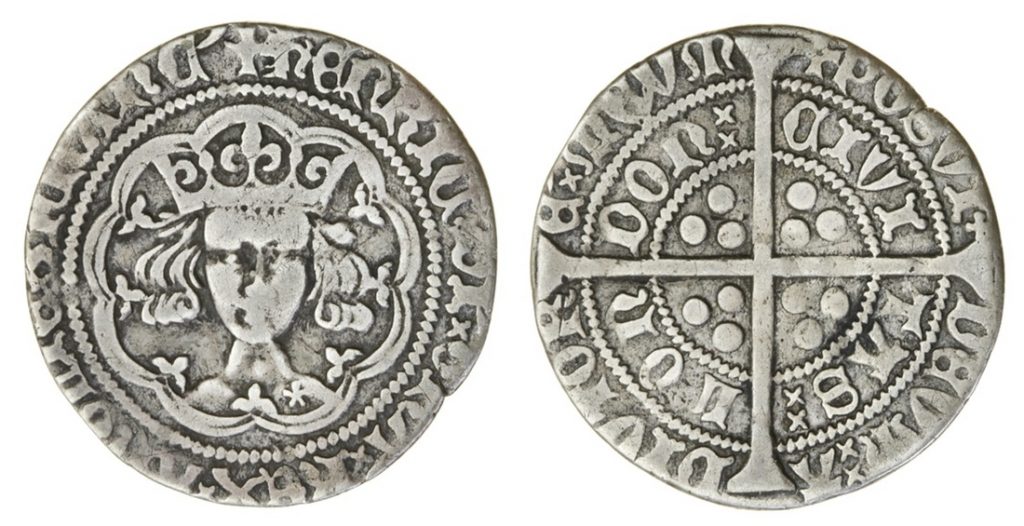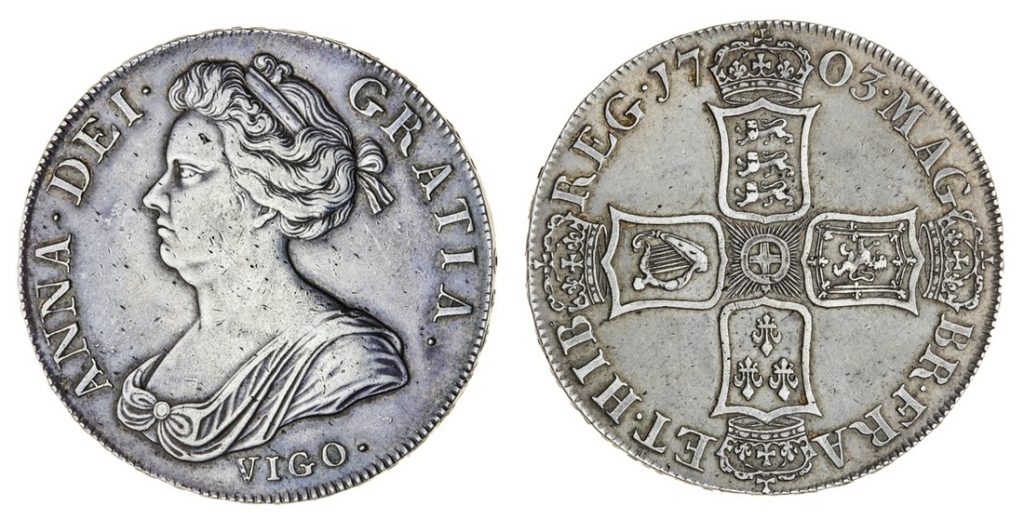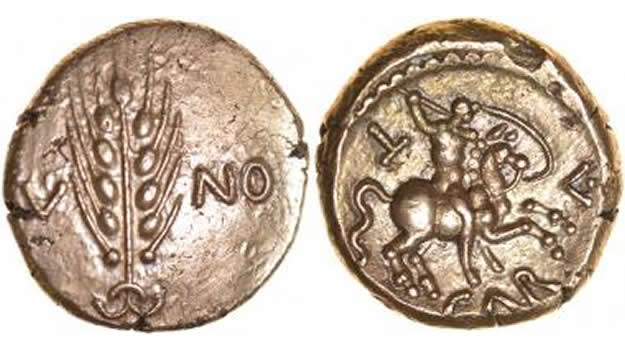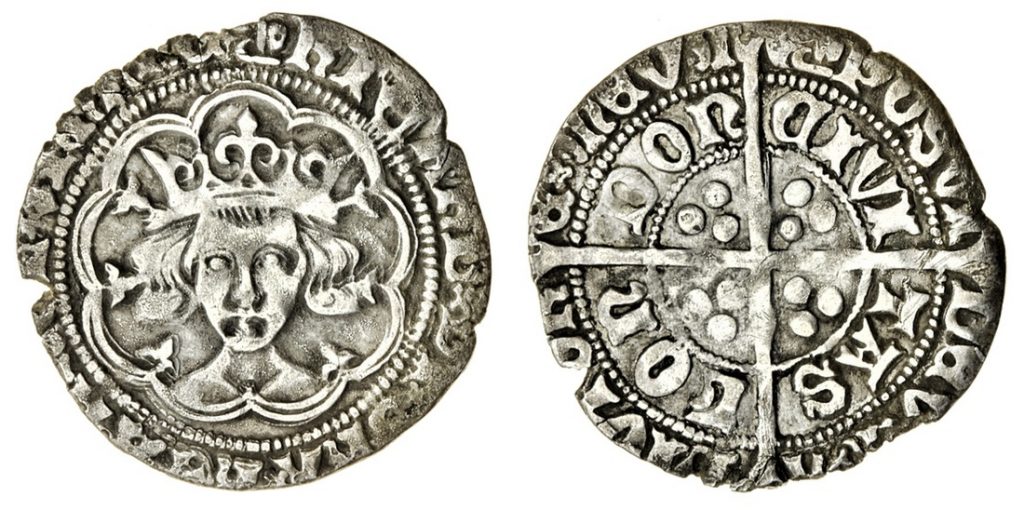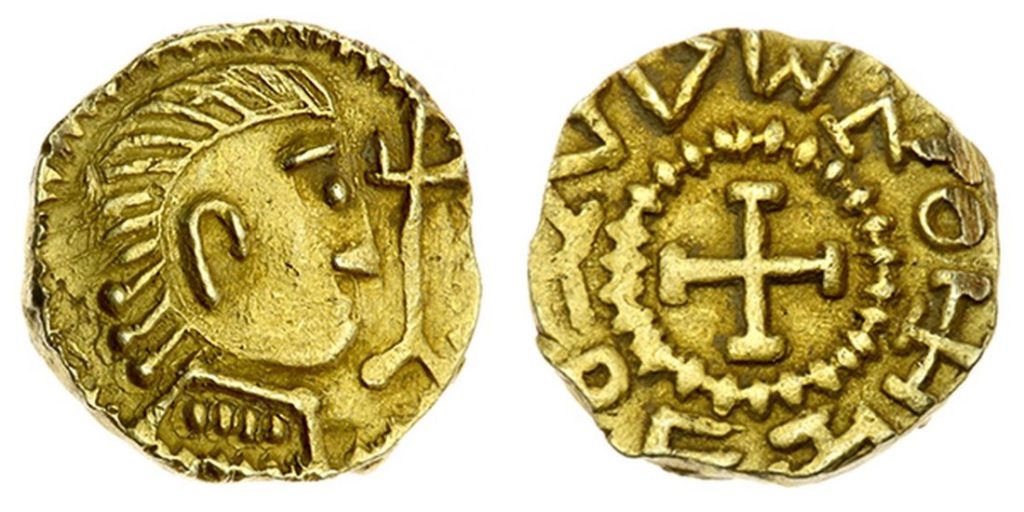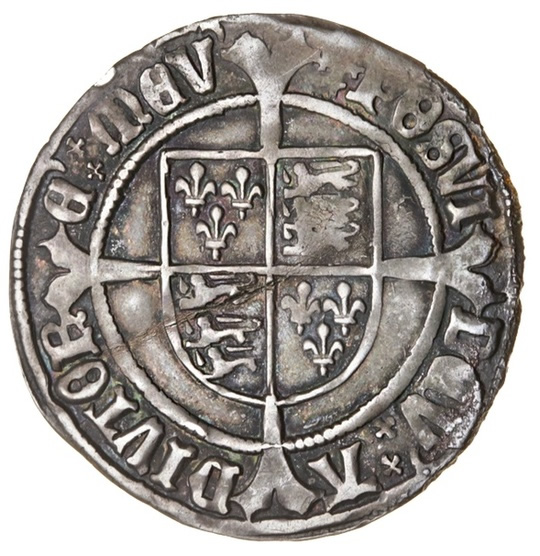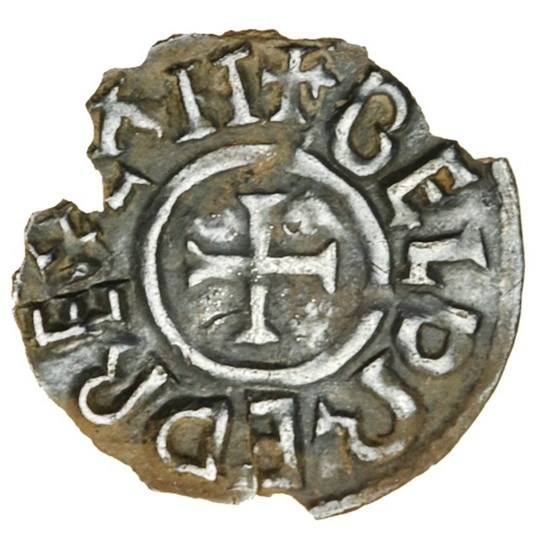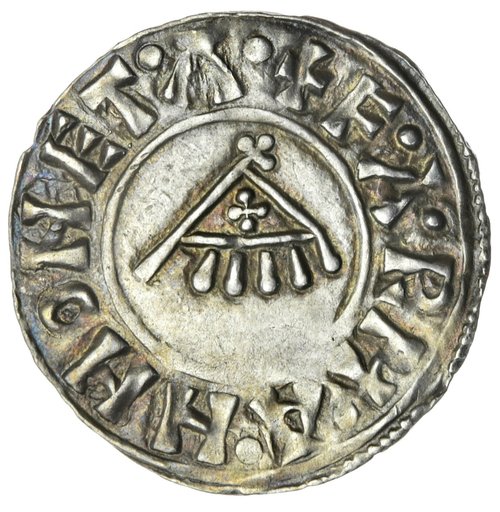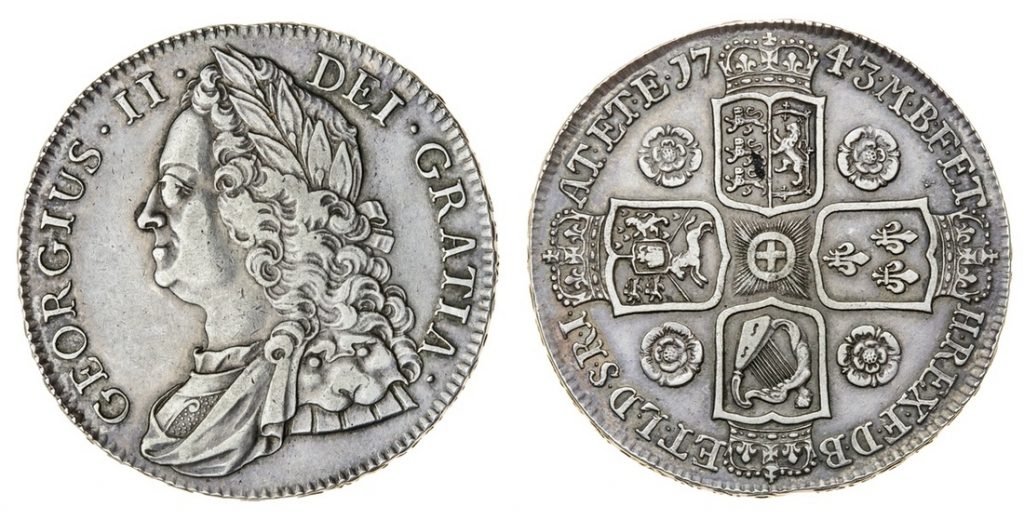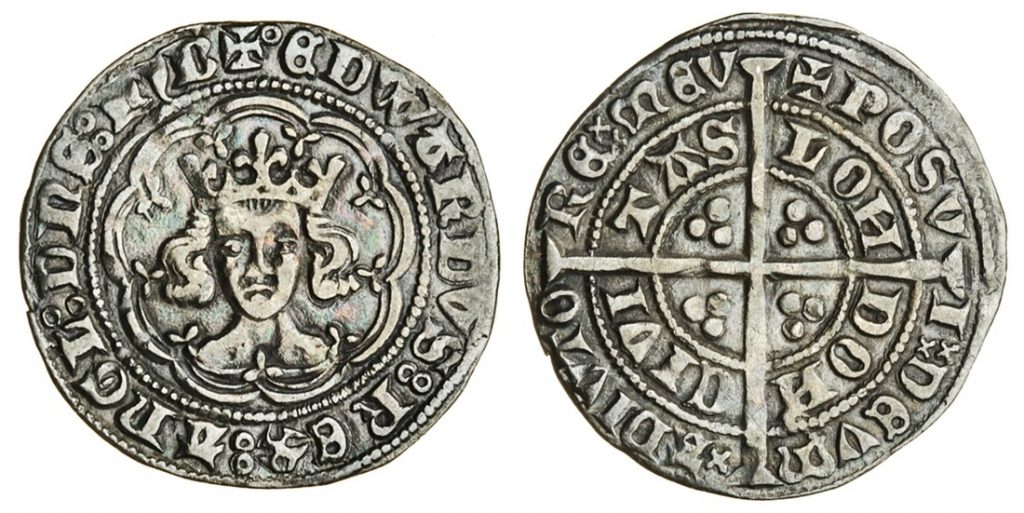Christmas Coin Quiz – Answers
Christmas Coin Quiz - Answers
Here are the answers to the Christmas Quiz, with the percentage of entrants that got each question correct. If you haven’t had the chance to do the quiz, it is available [here]; you will get an instant score when you complete it.
1
Answer: BCA
Correct: 68%
The three Kings are:
A: Edward I : 1272 – 1307
B: William I : 1066 – 1087
C: Stephen : 1135 – 1154
2
This coin is inscribed with “Dec” for “December” because it’s …
Photo: © DNW
c Gun Money
c Maundy Money
c Siege Money
c Special Christmas Issue
Answer: Gun Money
Correct: 49%
Gun money was issued by James II during the Williamite War between 1689 – 1691.
Minted in base metal, the intention was to redeem them gradually for silver coins following a victory for James II.
They bore the date in months to allow this gradual replacement.
The name comes from the idea that cannons were melted down to mint them.
3
What event in this King’s life occurred on Christmas Day?
Photo: © Spink
c Became Duke of Normandy
c Crowned King of England
c Died
c Invaded England
Answer: Crowned King of England
Correct: 70%
The King is William I. The dates for the events in his life are:
July 1035 – Became Duke of Normandy
28 September 1066 – Invaded England
25 December 1066 – Crowned King of England
9 September 1087 – Died
There is more about his life in my article William I
4
Answer: Angel
Correct: 73%
The angel was first issued by Edward IV in 1465 and derives its name from the representation of the archangel Michael slaying a dragon.
5
6
What appears in the spandrels of this coin?
Photo: © Spink
c Crowns
c Leopards
c Quatrefoils
c Trefoils
7
For which King was this penny minted?
Photo: © Spink
c Æthelred
c Eadred
c Edward the Elder
c Edgar the Peaceful
Answer: Edward the Elder
Correct: 39%
This is a penny of Edward the Elder, Floral type, c 910 – 915.
8
Where does the gold come from for this James II Five-Guineas?
Photo: © Spink
c Africa
c Asia
c Europe
c South America
Answer: Africa
Correct: 56%
The elephant and castle mark below the King’s bust indicate that the gold was mined by the Africa Company.
The coin’s name comes from the Guinea Coast of Africa.
9
George III twopence. What nickname was given to this type of coin due its size and thick rim?
Photo: © Detecting, CC BY-SA 3.0
c Broadside
c Cartwheel
c Pan Lid
c Wagon Wheel
Answer: Cartwheel
Correct: 86%
In the 18th century, copper coins were being melted down to make lightweight forgeries. As a solution, Matthew Boulton proposed that each coin should contain its value in copper. Due to its unusually large size, it earned the nickname “cartwheel”.
10
Answer: Edward IV
Correct: 40%
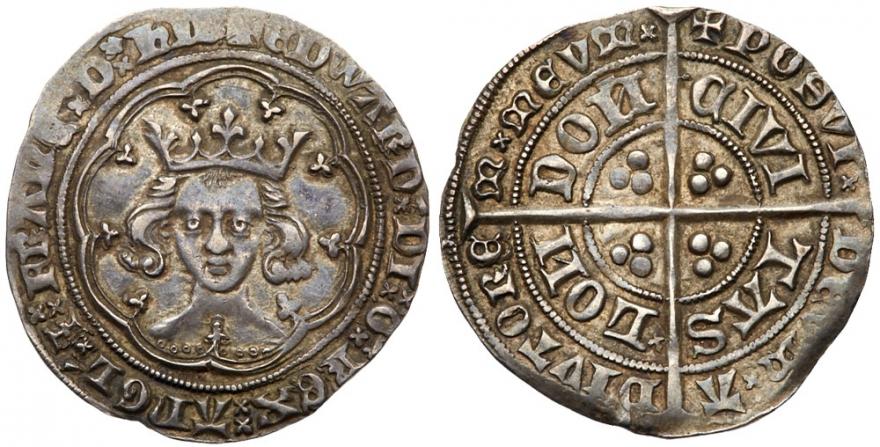

Photo: Somerset CC, CC By SA4.0

11
Henry VIII Crown – which of his wives is acknowledged?
Photo: © Spink
c Anne of Cleves
c Catherine of Aragon
c Catherine Howard
c Catherine Parr
Answer: Catherine of Aragon
Correct: 48%
Henry VIII, with Catherine of Aragon, Crown of the Double Rose. Catherine (or Katherine) is indicated by the “K” on the reverse.
The “K” was replaced by an “A” and then “I” for Anne Boleyn and Jane Seymour. After Seymour’s death, this became “R”, to form “HR”.
12
Which type of William I Penny is this?
Photo: © Spink
c B.M.C. III
c B.M.C. IV
c B.M.C. V
c B.M.C. VI
Answer: B.M.C. VI (Sword Type)
Correct: 34%
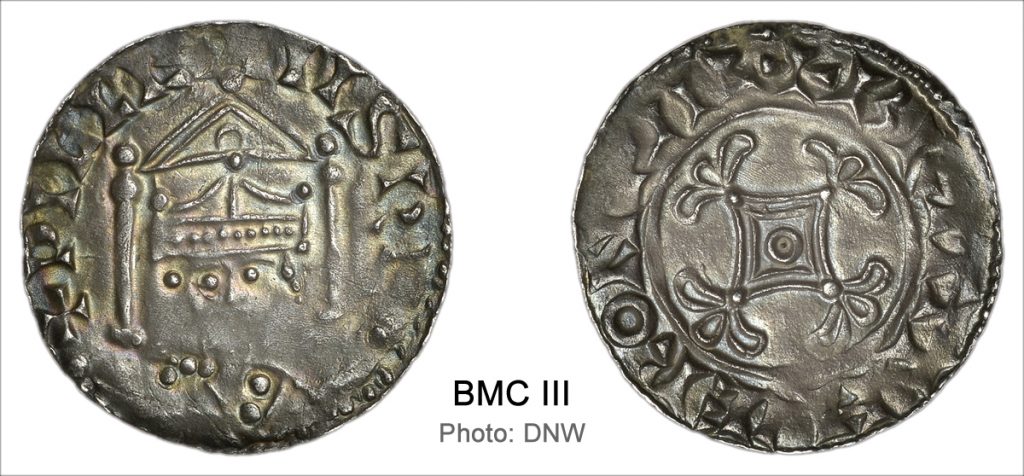


13
Which phrase appears in the legends of this coin?
Photo: © Spink
c But Jesus, passing through the midst of them, went His way
c I have made God my Helper
c This is the Lord’s doing and it is marvellous in our eyes
c Through concord kingdoms flourish
Answer: This is the Lord’s doing and it
is marvellous in our eyes
Correct: 44%
The abbreviated legend in Latin on the reverse reads:
A DNO : FACTVM EST ISTVD ET EST MIRAB : IN OC : NRIS
In full this is:
A DOMINO FACTUM EST ISTUD ET EST MIRABILE IN OCULIS NOSTRIS
This is from Psalm 118:23 and translates as
“This is the Lord’s doing and it is marvellous in our eyes”
14
15
Which letters are ligated on this Henry III long cross penny?
Photo: © Spink
c E and X
c N and R
c S and R
c V and S
Answer: N and R
Correct: 37%
The legend reads:
HENRICVS REX III
Pairs of letters are ligated when the second upright of one letter, an “N” in this example, forms the upright for the next letter, in this case an “R”.
16
What error is present in this Charles I Unite?
Photo: © Spink
c “C R” missing from the field
c Kings head facing the wrong way
c Legends are transposed
c Spelling mistake
Answer: Spelling Mistake
Correct: 37%
The “O” is missing from “FLORENT”
The legend on the reverse should read:
FLORENT CONCORDIA REGNA (“Through concord kingdoms flourish“) as shown in the coin below
Photo: © Spink
17
Which of the seven issues of hammered coins of Elizabeth I is this?
Photo: © Spink
c First
c Third
c Fifth
c Seventh
Answer: Seventh
Correct: 32%
The coin was issued in 1601, as shown by the “1” at the top of the coin, which means that this is a coin of the seventh issue.
18
19
Is this King Edward I Penny a …
Photo: Numisantica, CC BY-SA 3.0 NL
c Continental imitation
c Modern Copy
c Mule
c Standard striking
Answer: Mule
Correct: 32%
This is a mule because the obverse is of one type of class and the reverse is of a different class. In this case, the obverse is class 10ab and the reverse is class 9b.
20
Answer: Voided Short Cross
Correct: 51%
Richard I reigned from 1189-99
The dates for the changes to the cross on the reverse of coins are:
1180: Henry II introduced the voided short cross
1247: Henry III replaced this with the voided long cross.
1279: Edward I replaced the voided long cross with a long cross (ie not voided)
21
Answer: 80d
Correct: 28%
This a James VI half merk.
A merk was originally valued ay 13s 4d, which was 160d or 2/3 of a Scottish pound.
Therefore, this half merk is 6s 8d, as shown by “6” and “8” on the coin, or 80 Scottish pennies.
22
What does EIC mean on this George II Five Guinea Piece?
Photo: © Spink
c East India Company
c Edward Isaac Croker
c Emergency Inflation Currency
c English Industrial Council
Answer: East India Company
Correct: 81%
The EIC provenance mark on the obverse indicates that this coin was struck with bullion supplied by the East India Company.
It occurs only on gold coinage of George II.
23
Which letter appears after the mascle stop on the reverse of this coin?
Photo: © Spink
c C
c L
c N
c P
Answer: L
Correct: 44%
A mascle is a diamond shape often used during the reign of Henry VI.
On this Henry VI groat, a mascle appears before the “L” of “LONDON” on the reverse.
24
Answer: 8th
Correct: 48%
This was minted for Eadberht “Praen” the last independent king of Kent, from 796 -798.
25
This 8 Reales is countermarked with which King’s head?
Photo: © Spink
c George I
c George II
c George III
c George IV
Answer: George III
Correct: 58%
As an emergency measure, during the reign of George III, foreign silver coins were countermarked with the king’s head.
This countermarked 8 Reales circulated at 4 Shillings 9 Pence in 1797.
26
Where was a hoard discovered that gave its name to this type of coin?
Photo: © Spink
c Gayton, Northamptonshire
c Ryther, North Yorkshire
c Tealby, Lincolnshire
c Wainfleet, Lincolnshire
Answer: Tealby, Lincolnshire
Correct: 66%
The Tealby hoard, discovered in 1807, consisted of some 6000 silver coins of Henry II.
Many of this type of coin are poorly struck on irregular flans.
27
Where was this Edward I Class IV long cross penny minted?
Photo: © Spink
c Bury St Edmunds
c Ipswich
c Sudbury
c Thetford
Answer: Bury St Edmunds
Correct: 54%
The legend on the reverse reads:
IOH ON SEINTED
IOH = John, ON = of, SEINT=Saint. ED=Edmund
This is the moneyer and mint, John de Burnedisse of Bury St Edmunds:
28
This coin is engraved with “OBS” for a siege coin. A siege of where?
Photo: © Spink
c Carlisle
c Newark
c Pontefract
c Portsmouth
Answer: Pontefract
Correct: 37%
Charles I, in the name of Charles II, Octagonal Shilling. The coin was made during the third siege of Pontefract Castle in 1948-9. Charles I had just been executed and Pontefract was the only Royalist stronghold left in Britain.
30
What is the minting error called on this J. Caesar Denarius?
Photo: © Spink
c Brockage
c Double Strike
c Transposition
c Uniface
Answer: Brockage
Correct: 32%
When a coin got stuck to one of the dies and wasn’t removed then the next coin to be struck would end up with an incuse (concave) impression on one side. This is known as brockage.
Brockage is a term that is defined in the Glossary
30
Who are being suckled by the wolf on the reverse of this Roman Denarius?
Photo: © DNW
c
c Castor and Pollux
c Hypnos and Thanatos
c Romulus and Remus
Answer: Romulus and Remus
Correct: 92%
.
31
Answer: Coventry
Correct: 44%
Coventry mint is indicated by a “C” on the king’s breast and by CIVITAS COVE TRE on the reverse
32
Where is there a mullet on this Henry V Groat?
Photo: © Spink
c After POSVI on the reverse
c Before POSVI on the reverse
c King’s hair
c On the King’s shoulder
Answer: On the King's shoulder
Correct: 49%
A mullet is a five or six pointed star.
34
From whom was the metal captured from to mint this Queen Anne Crown?
Photo: © Spink
c Dutch
c Portuguese
c Italians
c Spanish
Answer: Spanish
Correct: 66%
In 1702, an Anglo-Dutch fleet attacked a Spanish Treasure Fleet which was in the process of unloading at Vigo Bay and seized 4,500lb of silver and 7lb 8oz of gold.
The recently crowned Queen Anne requested that the word “Vigo” was added to coins made from the captured bullion.
34
35
On which side of this Richard III groat is there a tressure?
Photo: © Spink
c Brennus
c Caractacus
c Olyndicus
c Viriathus
Answer: Obverse
Correct: 41%
On this coin, the tressure surrounds the king’s head on the obverse and is comprised of 9 tresses.

36
37
What type of cross is on the reverse of this Thrymsa?
All Photos: © Spink
c Fourchée
c Pattée
c Pommée
c Potent
38
Answer: Earl of Ormonde
Correct: 34%
These crudely made coins were issued in Ireland in 1643-1644 under the authority of the Lord Justice of Ireland, the Earl of Ormonde, and are known collectively as “Ormonde Money”
39
Where did the metal come from to strike this George II Crown Piece?
Photo: © Spink
c Lancashire
c Wales
c West Country
c Yorkshire
Answer: West Country
Correct: 27%
Four roses in the angles, (between the shields), on the reverse signify silver from the West Country.
40
Which period is this Edward III HalfGroat from?
Photo: © Spink
c Pre-Treaty Period
c Treaty Period
c Post-Treaty period
c Not possible to tell
Answer: Treaty Period
Correct: 39%
Following the Treaty of Brétigny in 1360, Edward III dropped his claim on the throne of France and hence “FRANC” was removed from the obverse legend.
When the treaty broke down in 1369, the claim on the throne of France was once again recognised on coins issued after that date.

